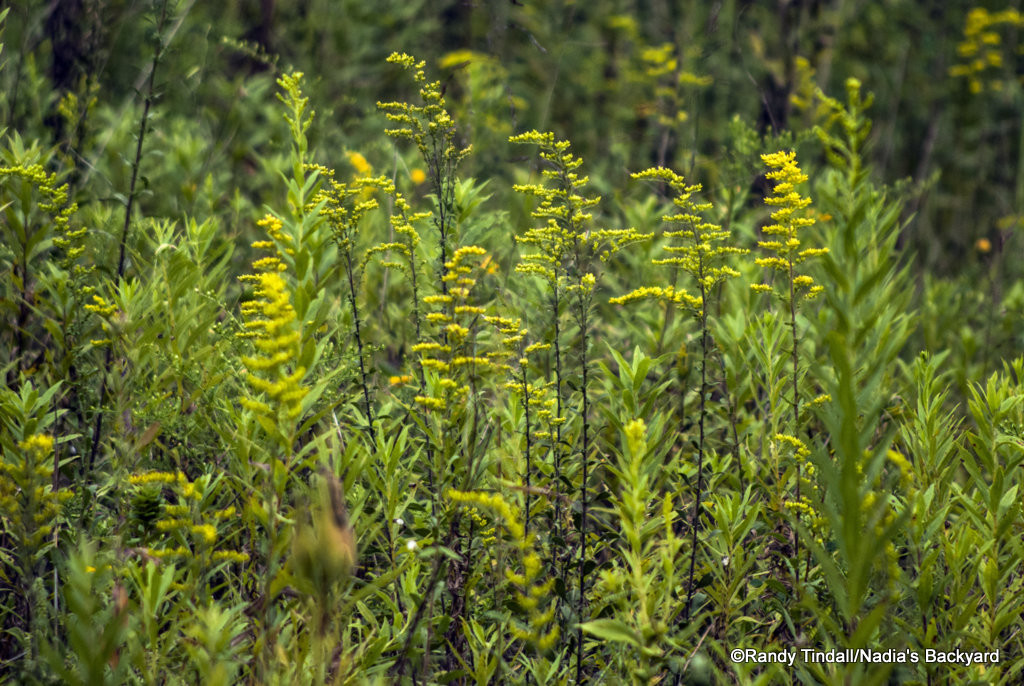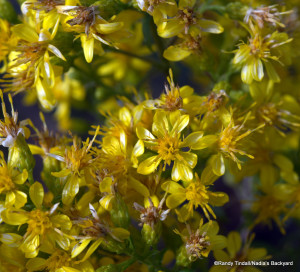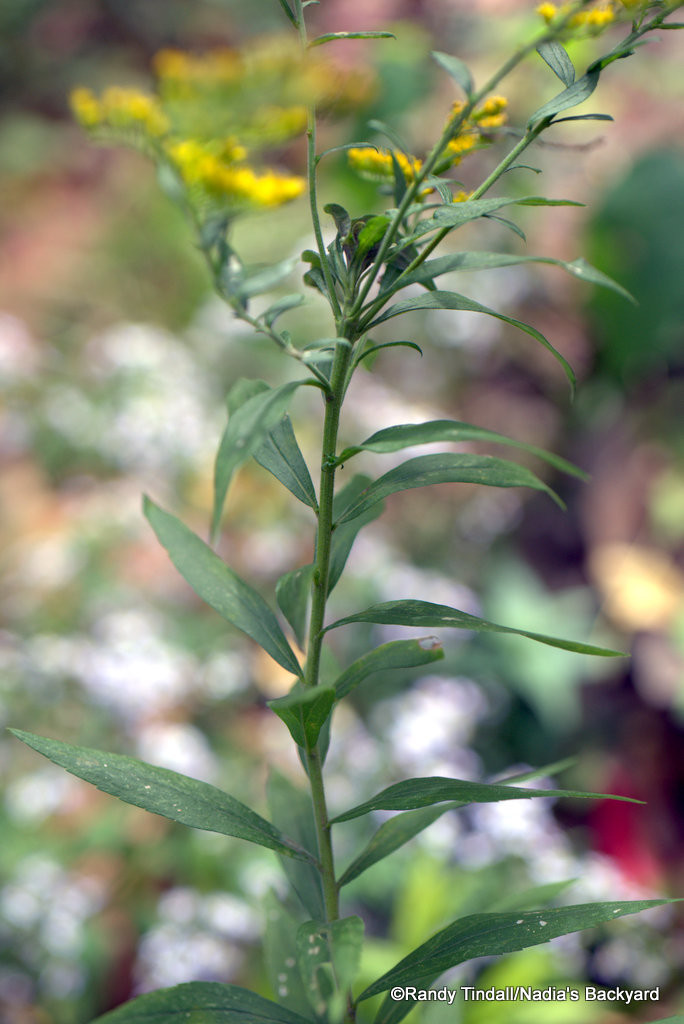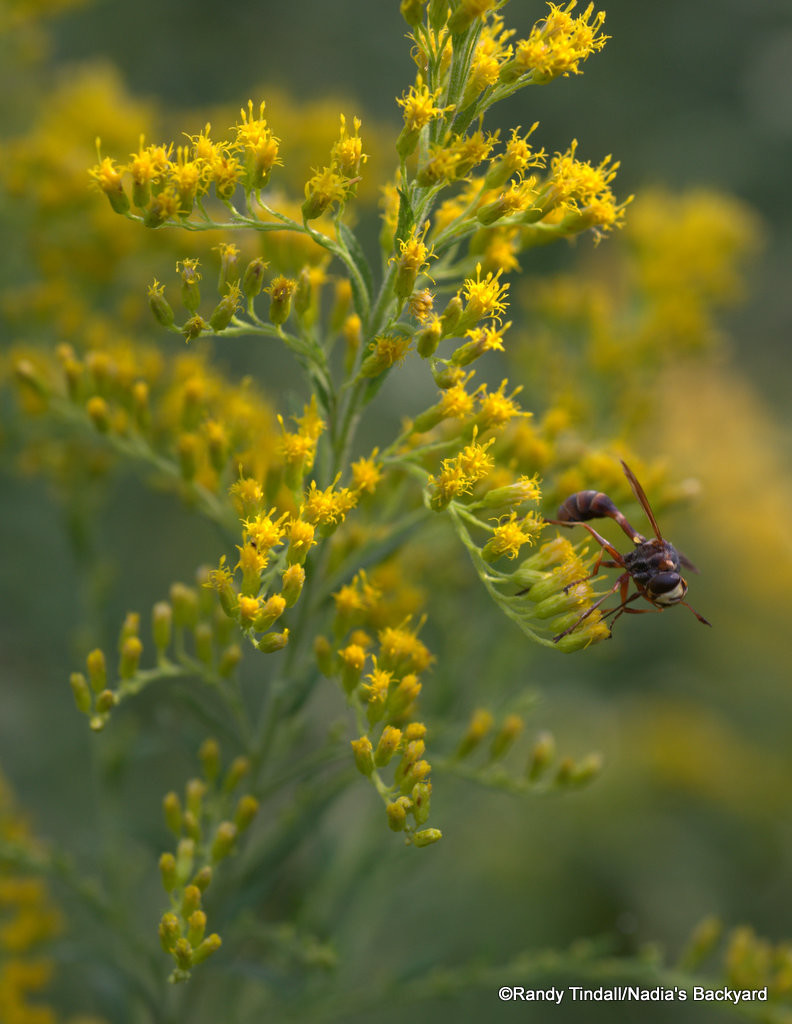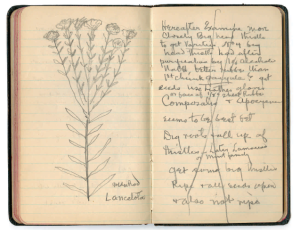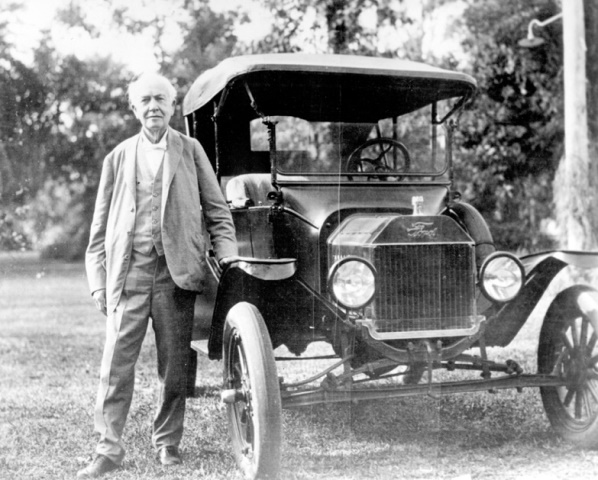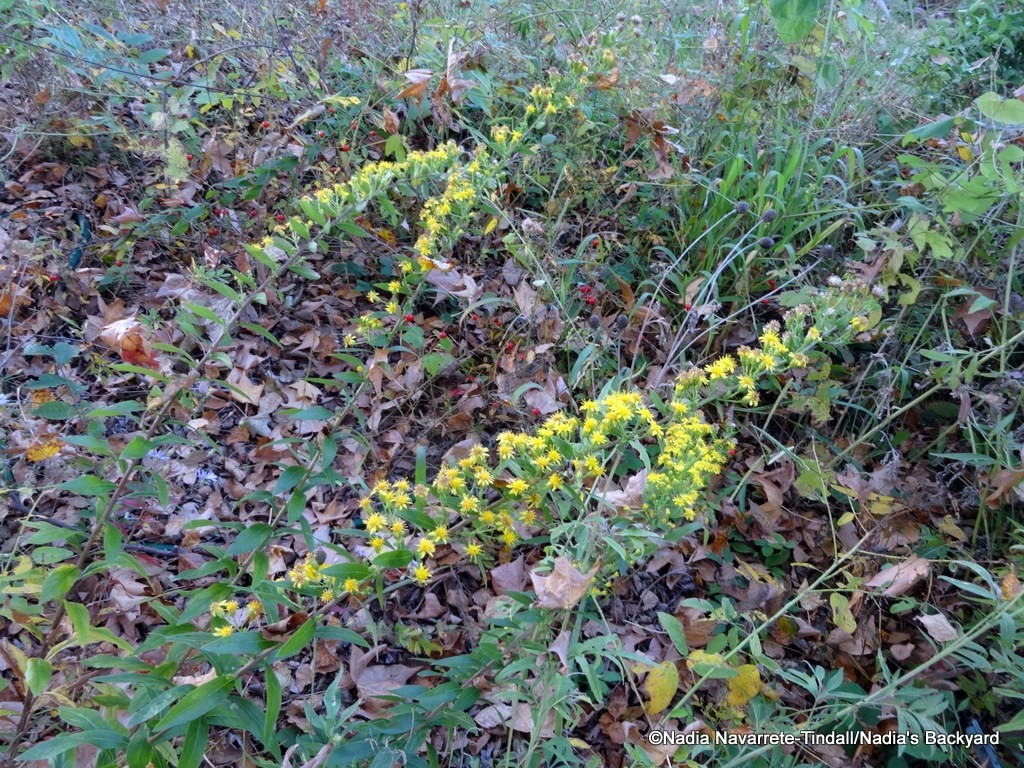“The fragrance, color, and form of the whole spiritual expression of Goldenrod are hopeful and strength-giving beyond any others I know. A single spike is sufficient to heal unbelief and melancholy.” — John Muir
*************
We always knew that our backyard was good for treating skepticism and depression, but now we know why. It’s our goldenrods!
And apparently spiritual malaise isn’t the only thing goldenrod can treat, since it has been used as a traditional medicine for numerous conditions since, well, forever. In fact, the name “solidago” comes from the Medieval Latin “soldago”, meaning a plant with healing properties. More on this later, though, since in our yard goldenrods serve other functions, such as providing gorgeous splashes of bright yellow color for us and a smorgasbord of nectar for myriads of pollinators, including honeybees. Considering that many species of goldenrod bloom on into October and November, this makes them important sources of late-season food for pollinators. In addition, many caterpillars feed on these plants, making them effective nurseries as well as a solace in old age for pollinating moths and butterflies.
Let’s consider showy goldenrod (S. speciosa) as an example, although we have at least four goldenrod species in our yard—stiff goldenrod (S. rigida), showy goldenrod, elm leaf goldenrod (S. ulmifolia) and downy goldenrod (S. petiolaris).
This plant is described as “a rhizomatous, Missouri native perennial which typically occurs in dry soils in open woods, fields and prairies throughout most of the State except the Ozark region. Features tiny, bright yellow flowers borne in dense, erect, club-shaped terminal clusters atop stiff, narrow-leaved, reddish stems typically growing 2-3′ tall.” (Many other goldenrods, over 70 species in North America, are variations on this theme and can be difficult to tell apart sometimes—here is a key developed by Justin Thomas for many Missouri species.)
Goldenrods are propagated by wind-blown seeds, as well as spreading efficiently through rhizomes. In fact, they are considered weedy and a nuisance by some. They are excellent colonizers of bare soil and disturbed areas, “and, unlike many other colonizers goldenrods don’t typically fade away in the face of competition from perennial grasses. These characteristics make them a staple plant of old fields – cropfields that are allowed to stand idle and be colonized by whatever species can do so. That’s an ideal situation for goldenrods, and they can quickly become one of the dominant species in an old field (mostly tall and common goldenrods, not so much others–Nadia).
“If goldenrod needs control in some situations, what’s the best technique? It doesn’t seem to be suppressed by dormant season fire. Broadcast herbicide spraying is almost certain to be counterproductive both because it destroys much of the larger plant community and because goldenrod will almost certainly benefit more than other species from that suppression of competing plants.”
The take-home lesson here is that, especially on acreages, you might want to consider carefully before establishing stands of goldenrod where they don’t already exist. In smaller locations, like our yard, they can by controlled by physical weeding, but some folks won’t even put up with it in small plots. In our yard it has not been a problem to manage, nor does it seem overly aggressive, so we’re keeping it, because even a dense patch of it is a beautiful sight. Just be aware.
Also, many people who haven’t researched goldenrod are cautious of it because they believe it is a leading cause of hay-fever in late summer and fall. On the other hand, many people who have researched goldenrod are of the opinion that it is not allergenic at all. Both are wrong. Numerous sources correct the first impression, noting that goldenrod blooms about the same time as does ragweed, which is indeed a major cause of allergies. Goldenrod, being way easier to notice, gets the blame much of the time. I have had people tell me that even their doctors have told them to stay away from goldenrod, but a little observation of the plant tells us something that should lay some of these fears to rest. As mentioned earlier, the flowers swarm with pollinators of all types, indicating that the plants are mostly insect-pollinated. The pollen is heavy and sticky and not nearly as abundant as in wind-pollinated plants like….ahem….ragweed. It doesn’t travel far unless it gets a lift from an insect. Ragweed pollen disperses wherever the breeze takes it and over large distances. So go yell at ragweed.
But, goldenrods are indeed allergens and can cause serious problems in some people, including florists, flower arrangers, gardeners and others who come into close physical contact with the plants. If you get right in there and snurfle around in a patch of goldenrod, and you are allergic to it, you will pay a price, from respiratory symptoms to hives. But it is more of an occupational hazard than a general one. Mostly, just don’t worry about it.
If you decide to overcome your hesitation and establish goldenrod, it is not difficult and the plants are not fussy, at least in our experience. In fact, they will likely show up on their own, blown in on the breeze. Showy goldenrod is said to have preference for “full or partial sun (although most varieties, like elm-leaf and cliff goldenrod, do fine in partial shade—Nadia), and slightly moist to slightly dry conditions. The soil can contain significant amounts of loam, sand, or rocky material. Occasionally, the leaves succumb to powdery mildew and other kinds of foliar disease, particularly after the blooming period is over in the fall. This plant is easy to grow, but can topple over if it is spoiled by excessive moisture or fertilizer.”
Once you have goldenrod, what can you do with it, besides admire it? Well, the young leaves and flowers are edible, although we haven’t tried them yet. The honey is said to be one of the best after it is ripened sufficiently by bees, plus goldenrod is used to make herbal tea which was once considered to be so good that it was imported by the Chinese, who are rumored to know a bit about tea. Here in the Colonies, it was once called “Liberty Tea”, as colonists substituted it for black tea after a certain festival in Boston Harbor made the latter unpopular.
Goldenrod has been used medicinally by many cultures, for such things as kidney ailments, sore throats, toothaches, and flatulence, among many other things, including, irony of ironies, treatment of allergies.
These plants are also known for making excellent dyes for fabrics. Guess what color? Go here to find out and learn how to do it.
Finally, if you’ve got a MacGyver in your family and need to whip up a quick set of tires for the family ride, goldenrod produces a latexy sap which was once considered a possible source of rubber for industry. In fact, Thomas Edison developed a plant that had up to 12% rubber content and grew 12-feet tall!
Edison teamed up with George Washington Carver to produce rubber from this sap and they eventually succeeded, although other types of synthetic rubber eventually won the day. Henry Ford even presented Edison with a Model T which had tires made from goldenrod rubber.
So, unless you’re afraid of its reproductive assertiveness, why would you not want these beautiful, showy, beneficial plants in your native garden? They are colorful, wonderful for pollinators, tasty (we’re told—we’ll let you know) and easy to grow . We love ours!
There are some people, however, who are just plain hard to please. A fellow named William Cobbett obviously wasn’t fond of it in English gardens, where it is popular as an ornamental (as elsewhere in Europe).
“Nay, that accursed stinking thing, with a yellow flower, called the ‘Plain-Weed,’ which is the torment of the neighboring farmer, has been, above all plants in this world, chosen as most conspicuous ornament of the front of the King of England’s grandest palace, that of Hampton Court, where, growing in a rich soil to the height of five or six feet, it, under the name ‘Golden Rod’, nods over the whole length of the edge of the walk, three quarters of a mile long and, perhaps, thirty feet wide, the most magnificant, perhaps, in Europe.”
What a grump.

